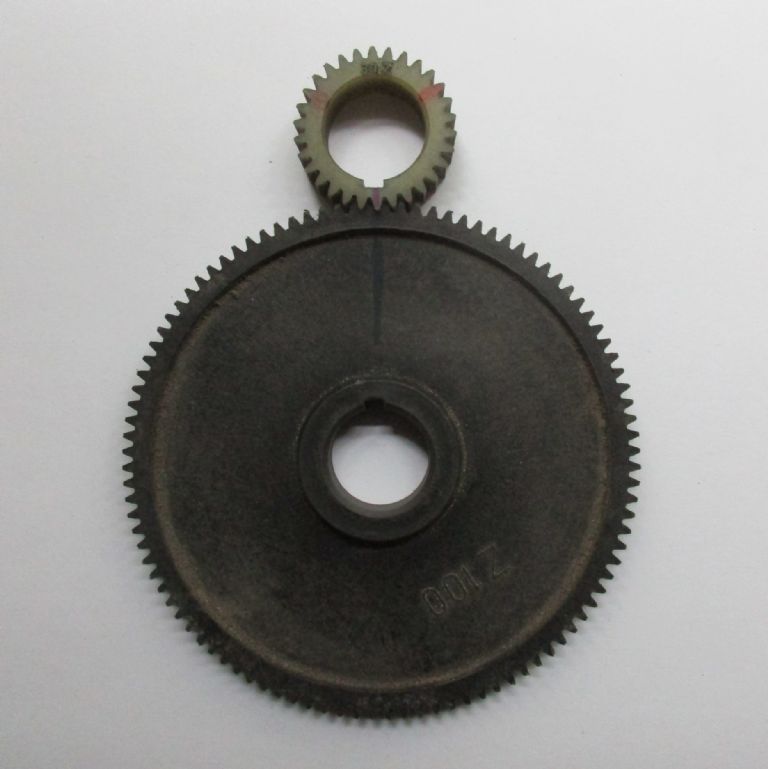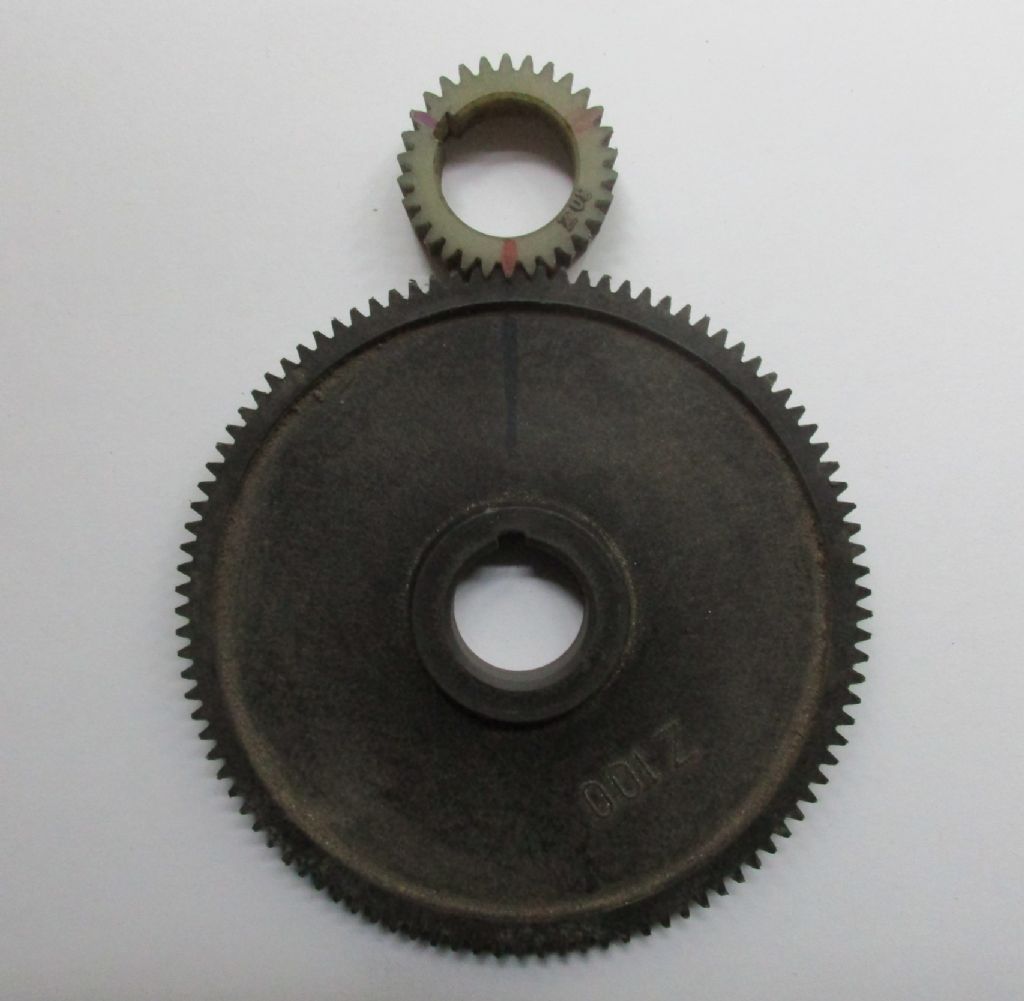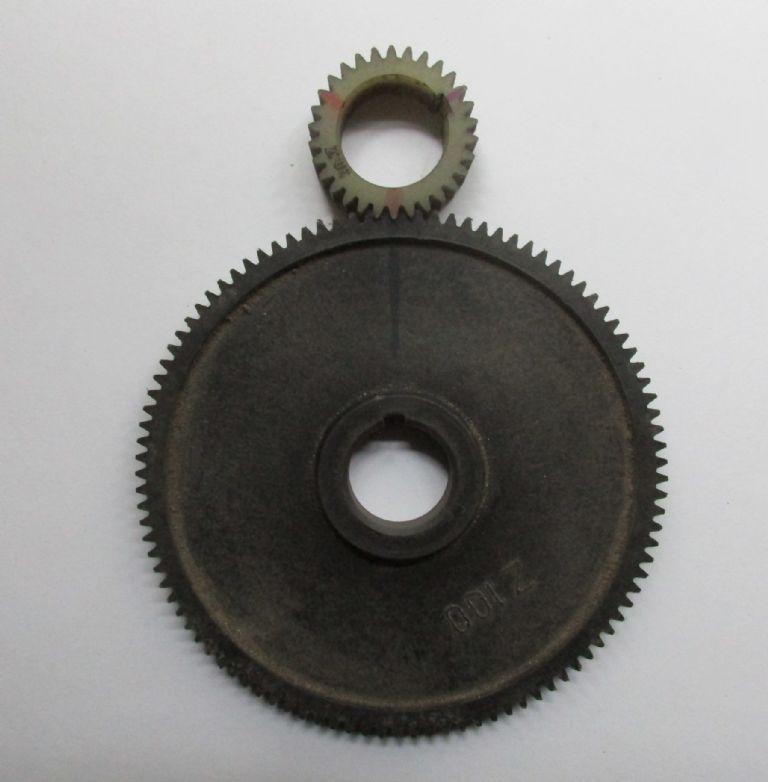Hi,
It's funny how a problem like this can get stuck in your head. I think I have finally sussed it out and for what it's worth this is what I have come up with.
If we refer to Macolms drawing there are two forms of rotation going on here.
The first of these is the rotation of the small wheel around the axis of the large wheel. If the 2 circles have smooth circumferences and the small circle is rotated from the 12 o'clock position to the 3 o'clock position around the centre of the large circle without rotating about its own axis (rolling), the A point on the small circle will change from the 6 o'clock to the 9 o'clock position which gives an apparent clockwise rotation about the axis of the small circle of 90 degrees.
The second form of rotation is the small circle rotating about its own axis (rolling). If we assume the large circle to be a 120 tooth gear and the small circle to be a 40 tooth gear (3:1) then rolling the small gear from 12 to 3 o'clock will involve 120/4 = 30 teeth meshing which will cause the small gear to rotate by 30/40 X 360 = 270 degrees.
The total apparent rotation of the small circle is therefore 90 + 270 = 360 degrees which gives a total of 4 apparent rotations per full traverse of the large circle. This is made up of 3 rotations about the axis of the small wheel and 1 rotation about the axis of the large wheel.
Interestingly, this problem doesn’t arise when the large circle is rotated about the small circle. While playing with a 28 tooth gear and a 56 tooth gear, I could see that the small gear apparently rotated 3 times when circumnavigating the large gear instead of the intuitively expected twice.
When the large gear was rolled around the small gear however, things went as expected, with the large gear rotating 180 degrees for the first circuit and 360 degrees to complete the second.
I think this contradicts the “mathematical solution” presented in the video Michael linked to:
**LINK**
Regards,
Alan C.
 Michael Gilligan.
Michael Gilligan.







